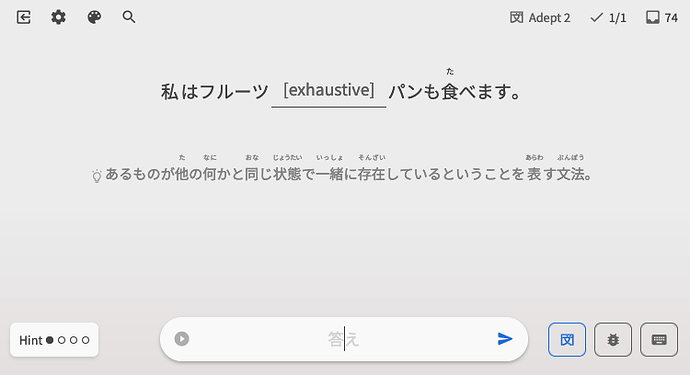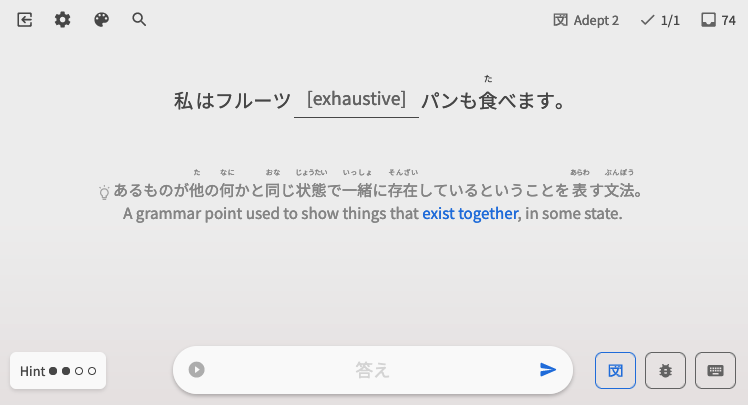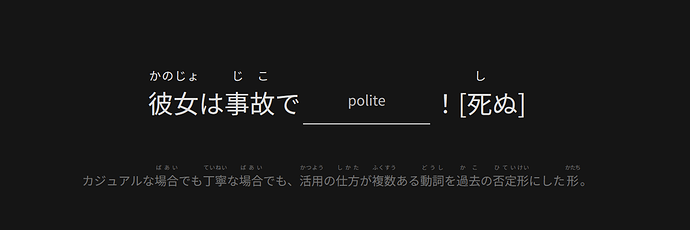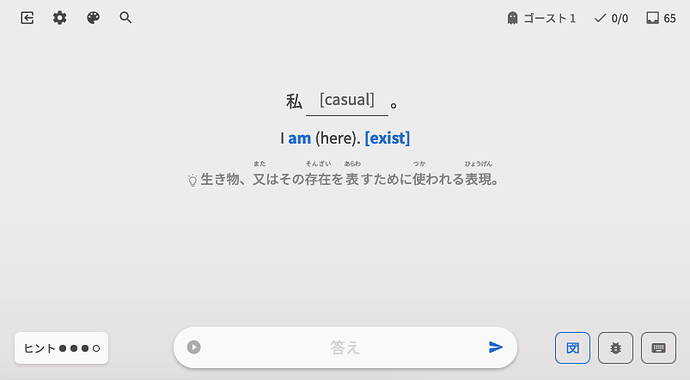Hi All! 
Today we would like to announce a big change in how you can study grammar on Bunpro. We have updated the hints for every grammar point to include a Japanese version, just like we did for vocab! 
Hints
Similar to the vocab hints, these hints will describe the grammar point that is being tested. They will also have a Japanese translation so that if you wish to study using only Japanese, you will have the option to do so. We tried our best to translate the English hints into Japanese in a way that you would be able to switch between the two if you are unsure about what the Japanese hint is asking for.
- A suffix highlighting that something is in the style or air of (A).
- ある物が(A)のスタイル、または(A)のようであると言うことを強調する接尾語。
As can be seen in this example, although we have tried to translate them so that they match 1:1, there will be some slight differences. This to make them sound more natural, and mainly because we did not want to use the target grammar points or words in the hints.
As you can see from these screenshots, the Japanese hint will be displayed first, then in the next cycle, the English hint will be displayed.
Goals 
Our goal for adding hints to vocab and grammar is to help students transition to studying using primarily Japanese. This feature would be really helpful once one reaches a sufficient level, since the hints could help students with understanding Japanese from a different angle. By providing students with these hints in both English and Japanese, we believe that they will develop a deeper understanding of each grammar point, and see how patterns that seem similar differ by seeing what the hint focuses on.
For Example:
けど and が both mean ‘But’ In english, but let’s check out the hints for these!
- けど 'One of the most casual ways to express but, when wanting to highlight contrasting pieces of information.'
- が 'A formal, short way of expressing an alternative view.'
As you can tell from these examples, the focus of each of these words are put on different places. けど focuses on ‘contrasting information’ and is ‘casual’, while が focuses on ‘alternative views’, and is ‘formal’. By being able to see these differences, we believe that it will make it easier for students to identify the difference in usage and their nuances.
Just like with vocab, hints will help students learn how to explain grammar points in Japanese and could help one to learn grammar points and words that are associated/similar to the grammar point that is being tested. Also, knowing exactly what is being asked will make it easier to answer questions without looking at the English translation.
Thank You! 
We hope that you find the new grammar hints useful! We believe that this is a feature every student should take advantage of when they are at the appropriate level, since it could be a good way to immerse yourself with Japanese and would be an excellent opportunity to understand Japanese on a whole new level!
We would appreciate any and all feedback about this new feature so that we are able to keep improving it over time. As always thank you for your continuous support!
I hope that everyone has an AMAZING day! 
 Fuga
Fuga  !
!









 I hope this helps you in your Japanese learning journey!
I hope this helps you in your Japanese learning journey!
